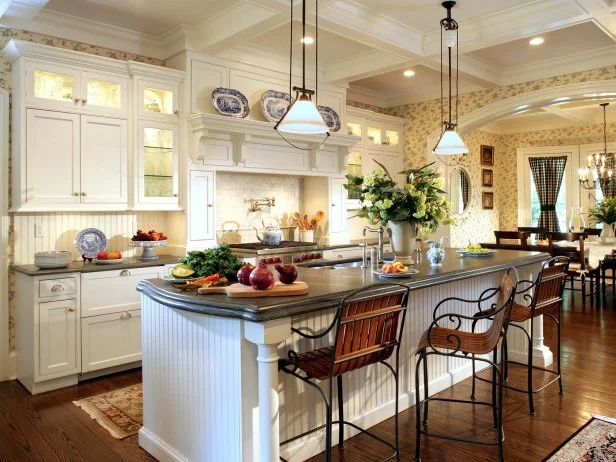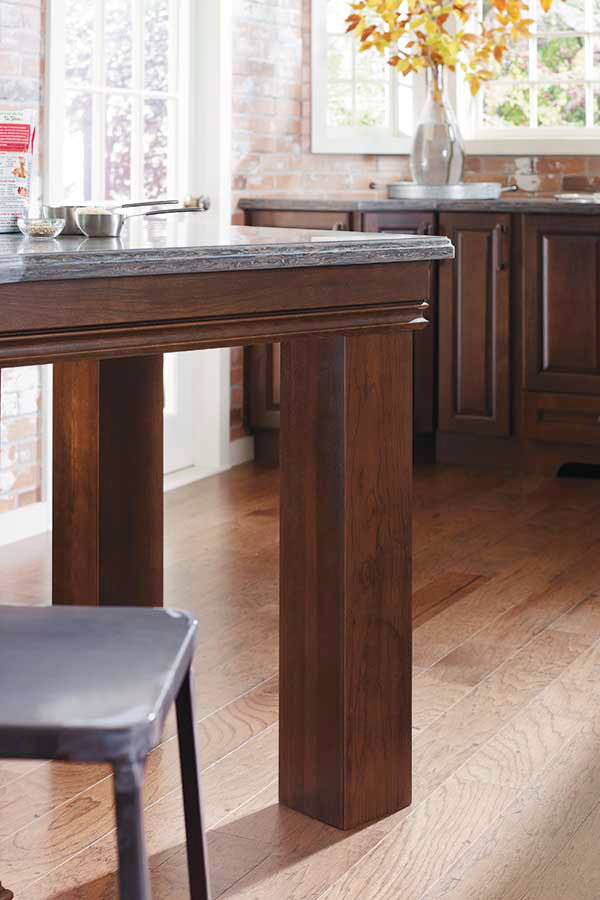Transform Your Kitchen with Beautiful Kitchen Island Legs
Transform Your Kitchen with Beautiful Kitchen Island Legs
Blog Article
Essential Tips for Selecting the Perfect Table for Your Kitchen Area
Selecting the perfect eating table for your kitchen is even more than simply an issue of preference; it demands a comprehensive understanding of your space and needs. The form of the table plays a critical role; while rectangle-shaped tables fit larger areas, round ones foster intimacy, and extendable alternatives provide flexibility. The table must harmonize with your kitchen's appearances and accommodate your family comfortably.
Procedure Your Area
Picking the perfect dining table starts with a precise evaluation of your readily available room. This fundamental step guarantees that the table not just fits comfortably within the space yet likewise enhances the general layout and capability of your eating location.
Take into consideration the circulation of motion around the table. It is important to leave adequate room for chairs to be taken out and for individuals to move the table without obstruction. A general guideline is to enable a minimum of 36 inches of clearance from the edge of the table to the closest wall surface or furniture piece. This makes sure ease of gain access to and comfort throughout meals.
Furthermore, think of the variety of people you usually delight and whether you require added room for visitors. Selecting an extendable table can provide flexibility, permitting you to fit varying numbers of restaurants. By properly determining your room, you lay the groundwork for selecting a dining table that improves both the looks and functionality of your eating area.
Select the Right Shape

On the other hand, round tables are outstanding for smaller cooking areas or intimate events, as they advertise conversation by permitting everybody to deal with each various other. They also provide a feeling of coziness and can fit well in tighter areas because of their lack of sharp corners. Oblong tables use the most effective of both worlds, integrating the length of rectangle-shaped tables with the intimacy of round ones, making them versatile for various setups.
Square tables are another choice, especially matched for square-shaped spaces. They create a contemporary and balanced appearance, promoting an equivalent dining experience for all seated. They might be much less practical for bigger gatherings unless they come with extensions. Eventually, the form you choose should align with your space dimensions and lifestyle to make certain both form and function.
Material Factors To Consider
When selecting a dining table, product factors to consider are paramount in determining the table's sturdiness, upkeep demands, and overall aesthetic. Wood is a timeless option, supplying classic charm and robustness. Woods like mahogany, oak, and walnut are particularly sturdy, though they can be pricey. kitchen island legs. Softwoods, such as pine, are a lot more economical but might be susceptible to scratches and damages.
Glass-topped tables provide a contemporary, sleek look and can make an area show up larger due to their transparency. Nevertheless, they call for constant cleaning to protect against spots and fingerprints. In addition, toughened up glass is suggested for its added toughness and safety.

Last but not least, composite materials like MDF (Medium-Density you could try these out Fiberboard) or plywood are budget-friendly choices. These products can mimic the appearance of solid timber but may not supply the exact same long life. They are normally simpler to clean but can be susceptible to water damages if not appropriately secured.
Ultimately, the option of material should straighten with your kitchen area's style, your lifestyle requires, and your budget plan restrictions. (kitchen island legs)
Seats Capability and Convenience
Exactly how do you determine the best seats capability and comfort for your eating table? For a household of four, a rectangle-shaped table of 48 inches long or a round table with a 48-inch size is usually enough.
Comfort is just as essential. The elevation of the table need to ideally be around 30 inches, offering a balanced ergonomic stance for seated restaurants. Chairs need to have a seat height of 18 to 20 inches to guarantee a comfy eating stance. In addition, consider the chair style; upholstered seats and encouraging back-rests can boost eating convenience considerably, particularly throughout long term dishes.
Design and Looks
Choosing a table that fits your style and aesthetic appeal includes balancing personal preference with the existing style of your eating room. The eating table is usually the focal point of the cooking area, and its style ought to complement the overall motif of the space. Whether your kitchen area boasts a modern, minimal appearance or a rustic, farmhouse appeal, the table you select should integrate with these elements to create a natural and welcoming atmosphere.
Consider products very carefully; wood offers an ageless appeal and can vary from abundant mahogany for a conventional seek to lighter oak for a modern feeling. Steel and like this glass tables, on the other hand, can introduce a streamlined, commercial edge to your cooking area. Do not neglect the table's form-- rectangle-shaped tables are flexible and traditional, while round and oblong options can cultivate a much more intimate eating experience.
Furthermore, pay close interest to finishes and information. A troubled coating could add personality and warmth, whereas a shiny surface can add to a clean, contemporary visual. Eventually, your table ought to not just fit seamlessly into your cooking area's design but additionally reflect your individual design, raising the room both functionally and visually.
Verdict
In verdict, selecting the optimal dining table for a kitchen area demands mindful analysis of room, form, product, seating capacity, and aesthetic harmony. Ultimately, a well-chosen dining table fosters a welcoming ambience and suits the house comfortably, thus improving the eating experience.

When selecting an eating table, product considerations are vital in identifying the table's toughness, maintenance demands, and total visual. For a family of four, a rectangular table of 48 inches long or a round table with a 48-inch size is usually sufficient.
Do not forget the table's shape-- rectangular tables are flexible and timeless, while round and oblong options can foster a more intimate dining experience. kitchen island legs.
Report this page